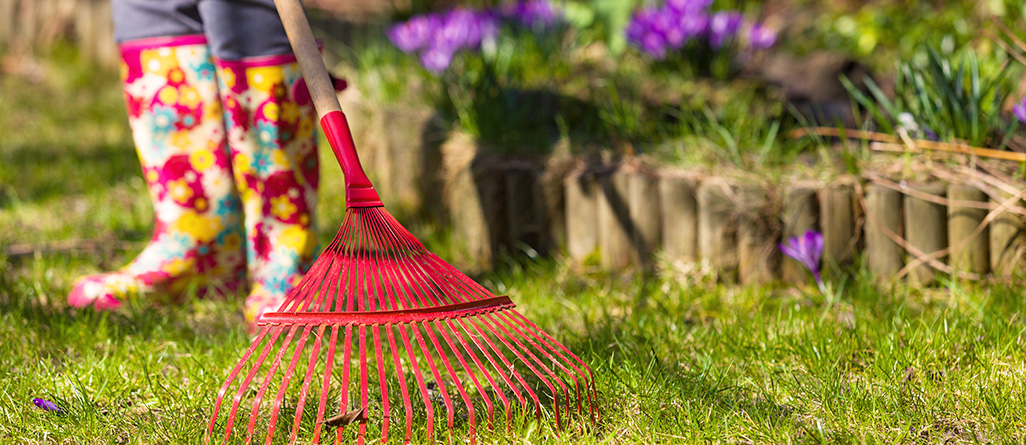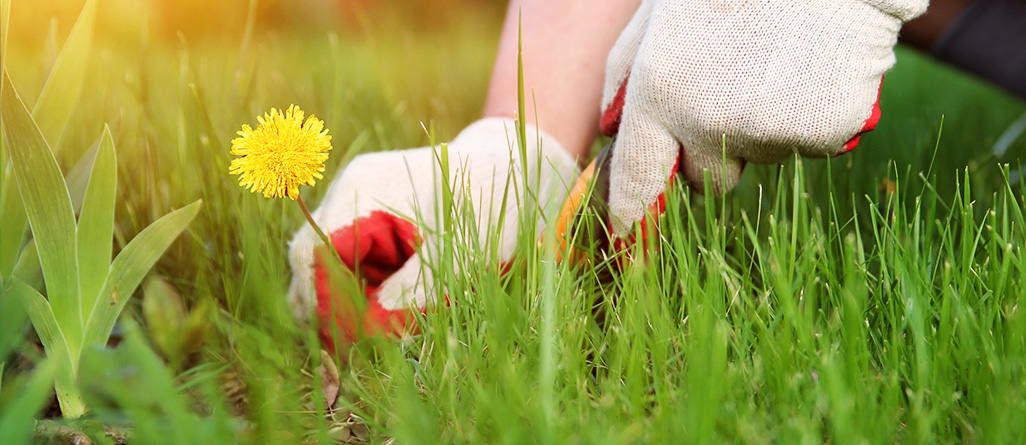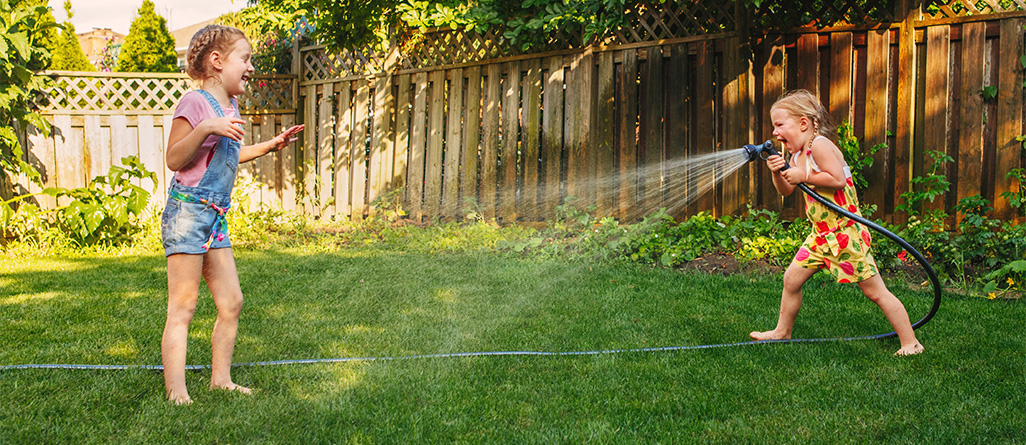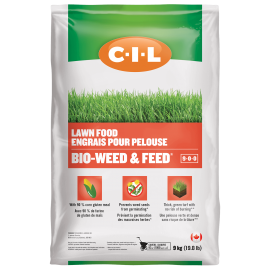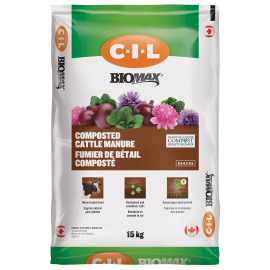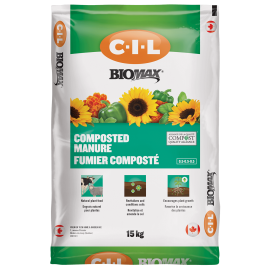Two ways to effectively get rid of weeds in lawns
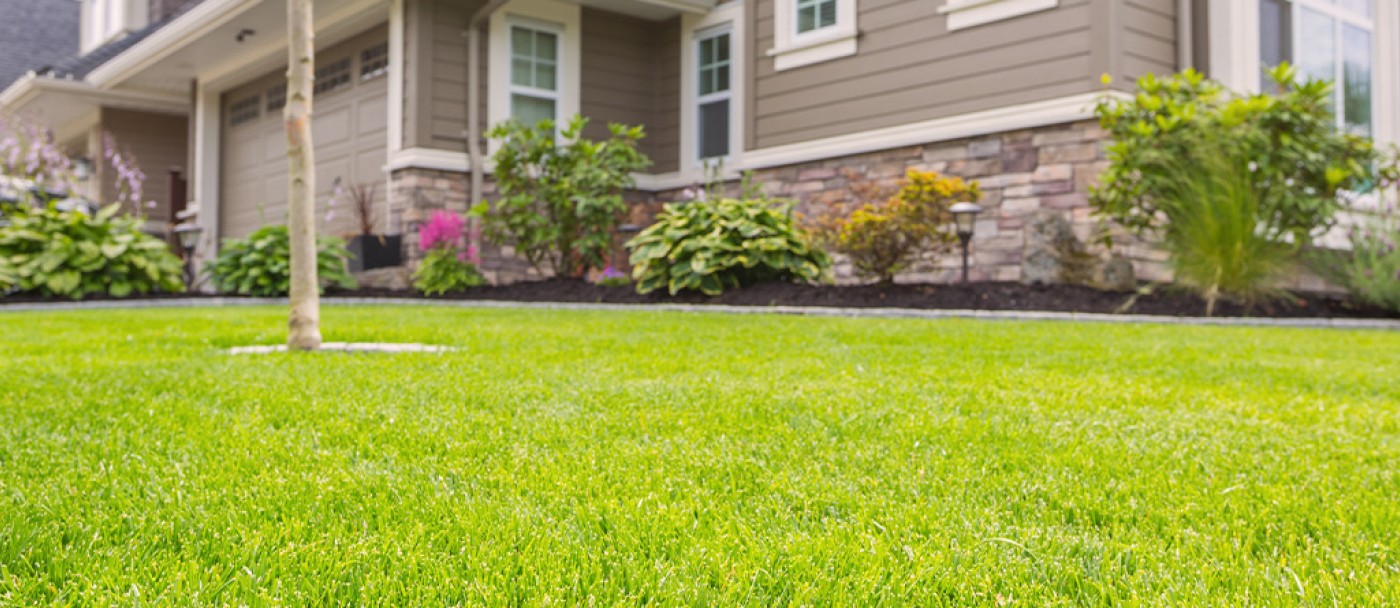
You may want an attractive lawn that fits into your neighbourhood. Likely, you’ll have moments of frustration trying to stay ahead of unsightly weeds. Maintaining a mostly weed-free lawn isn’t that difficult, and there are two ways of doing this: proactive and reactive.
The proactive way involves keeping your lawn thick and leaving no bare spots for weed seeds to germinate. The reactive solution is to spot spray a non-banned herbicide or manually pull weeds.
Proactive plan to make the lawn thick and healthy:
Early spring:
- Raking accumulated leaves and debris allows the grass to recover. Otherwise, the grass in those areas will be choked out and leave bare spots.
Mid-spring:
- When the temperatures reach at least 10 °C consistently, patch thin and bare areas with lawn soil and grass seed.
- Broadcast a lawn revitalizer such as PRO-MIX 4 in 1 Lawn Repair Grass Seed & Fertilizer, which gives the lawn a boost, for visible results in 7 days.
- Or fertilize the lawn with a regular lawn fertilizer such as C-I-L Lawn Food 30-0-3.
- If you are not planning on seeding, you can use C-I-L Bio-Weed & Feed 9-0-0 with corn gluten meal, which creates a natural barrier on the surface that inhibits seeds from germinating, especially crabgrass and broadleaf weed seeds.
Summer months:
- Don’t cut your grass too short. If you raise your lawn mower blade to 8-10 cm (3-4 inches), you will do several beneficial things. The taller grass will keep weed seeds from finding exposed bare spots and will also shade the crowns of the plants, keeping them from drying up too early.
- Fertilize the lawn for its second application.
- If possible, water the lawn once a week to a depth of 2.5 cm (1 inch). We suggest using a rain gauge to monitor the rainfall during the week and top up the difference with a sprinkler.
Early fall:
- Repair any lawn areas that may have been subjected to insect or drought damage by spreading C-I-L Enriched Lawn Soil and C-I-L Grass Seed. You want to get those bare areas filled with grass seedlings instead of weed seeds.
- Apply PRO-MIX Fall & Winter Multi-Season Lawn Food 10-0-32.
Reactive plan involves attacking the existing weeds:
Mid-spring:
- Apply a spot spray, such as Wilson WEED OUT Lawn Weed Killer, which is a natural-based selective herbicide that will kill weeds but not grass.
- Or, you can manually pull out the weeds. Use a lawn weeding tool that will pull them out, roots and all. Trying to remove leaves and stems by hand will only cause them to snap off, leaving the roots to regrow.
- The spring fertilizer will help in filling in the new open spots.
Early fall:
- Spot spray or manually pull out any new weeds, eliminating any weeds growing into next spring.
Consider the benefits of a thick, healthy lawn
You can achieve a lush lawn by doing the proactive approach and eventually forcing out the weeds, or you can be weed-free by simply doing the reactive tasks. But for a super lush lawn, doing both approaches will ensure that you will not only have a nice looking lawn, but you will also be providing multiple side benefits. See inset.
- Improves curb appeal.
- Provides a nice, soft surface for children and pets to play on.
- Cools the air. Touch a thick lawn in summer, then touch a thin, weedy lawn or concrete. You’ll see the difference!
- Replenishes the air by absorbing carbon dioxide and releasing fresh oxygen.
- Sequesters carbon and keeps it underground and undisturbed.
- Acts as a sponge, holding in water that falls as rain or irrigation.
- Stops erosion by securing soil in its roots.
- Purifies the air: pollutants released into the atmosphere are trapped by grass blades and broken down by microbes in the soil.
TIPS: To obtain a thick, healthy lawn, we recommend applying a lawn fertilizer at least 3 times a season: mid-spring, early summer and early fall. At university trials, turf plots were treated with fertilizer 3 times a year for 3 years straight. No herbicide was applied. The ever stronger turf mat squeezed out most weeds and did not allow for bare spots for new ones to establish. After 3 years, there were hardly any weeds.
